The petroglyphs and rock paintings were important, sacred images for the ancient Rapanui of Easter Island.

On Easter Island, petroglyphs are located in every sector of the island where there are suitable surfaces. Favored locations are smooth areas of lava flow, or on smooth basalt boulders. Most of these surfaces occur along coastal areas. Many petroglyphs are eroded and indistinct, or concealed in caves.
One of the most famous motifs on Easter Island is that of Birdman, a halfman-halfbird image that was connected to cult events at the sacred site of Orongo.
Not all the petroglyph motifs are of sea forms or birdmen. Here we see a rooster and a bird. The rooster, part of a much larger panel with many other rooster motifs, is from the northwest coast area; the bird is from Tongariki.
Two large panels on flat lava flow at the sacred site of Tongariki are notable for their large petroglyphs of tuna, turtle, and other motifs such as human faces.
Petroglyphs are pictures carved into rock, Easter Island has one of the richest collections. Around 1,000 sites with some 4,000 petroglyphs are catalogued. Designs and images were carved out of rock for a variety of reasons: to create totems, to mark territory or to memorialize a person or event. There are distinct variations around the island in terms of the frequency of particular themes among petroglyphs, with a concentration of Birdmen at Orongo. Other subjects include sea turtles, "Komari" (vulvas) and "Make Make", the chief god of the "Tangata Manu" or Birdman cult.
The island and neighbouring "Motu Nui", in front of Orongo, are riddled with caves, many of which show signs of past human use and fortification, including narrowed entrances and crawl spaces with ambush points.

"Moai" are monolithic human figures carved from volcanic rock, some of the most incredible ancient relics ever discovered. There are around 300 moai stood upon massive stone platforms called "Ahu". The word "Ahu" also signifies a sacred ceremonial site. The moai statues were the ritually charged sacred objects of those sanctuaries. The total number of moai still in the Rano Raraku quarry are 397, total number of moai lying in transit outside of the Rano Raraku quarry 92. Statues have a considerable size range, from 2 meters to over 9 meters tall. One giant moai still attached to the matrix of rock in the quarry is over 20 meters long, and has an estimated weight of 270 tons.
Many Rapa Nui people believe that the statues were moved and erected by "Mana" a magical force. Great kings of a long gone era simply used their "Mana" to command the moai to move to the distant sites and stand there. The people of Rapa Nui believed that the moai also possessed "Mana", which was instilled at the time their white coral eyes were put in place, and that the moai used their "Mana" to protect the people of the island.
The stone statue could be moved using ropes, tilting and swiveling it along or they were transported on sledges or log rollers and then levered erect using piles of stones and long logs.
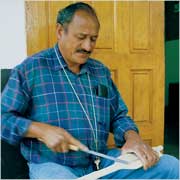
The Rapa Nui people are remarkable for wood and stone works. The more known are:
* 'Ao: two sided oar,ceremonial staff.
* Honu: figure of wood or volcanic rock in the form of a turtle.
* Moai Kava Kava: wood figure representing the masculine spirit, noted for its finely detailed carving, especially of the ribs.
* Rei Miro: wooden breast plate in a half moon shape, with human heads carved into the ends.
* Roo Roo: wooden tablet that is a reproduction of the original the same name.
* Toko Toko: wooden cane that usually has a head carved into the top.
Father Sebastian Englert Anthropological Museum (MAPSE)
Is a Museum in the town of Hanga Roa, named for the German missionary Fr. Sebastian Englert. The Museum was founded in 1973 and is dedicated to the conservation of the Rapa Nui cultural patrimony. The museum is administered by the Chilean Directorate of Libraries, Archives and Museums ( DIBAM ). The museum is filled with interesting artefacts and information, particularly historical detail about the islanders and the crafting and transportation of the statues, and geological background to the volcanoes and resultant stone used for the moai. It also has several Rongo-Rongo tablets (the equivalent of the Rosetta Stone for the ancient Easter Island language and inscriptions, which, prior to discovery of the Rongo-Rongo stones, could not be translated), which are held in great awe and respect. It is house of the only female moai (unfortunately broken in two), representing Ava Rei Pua, sister of Hotu Matua, the first king of the island, as well as one of the coral eyes that were placed in the moai, also there numerous examples of tools and weapons, mock ups of clothing, are wood statuettes, a photographic collection, archives of traditional music, and a three thousand volume library.
The Museum has an exhibition hall, library and coffee shop.
It is open from Monday to Friday: 09:30 to 17:30 hours
Saturday, Sunday and Holidays: 09:30 to 12:30 hours
Ticket Price: Adults $ 1.000 or US$ 2. Senior (over 60years) and secondary students has 50% discount, under 6 years the entrance are free.

Legend said when Hotu Matua the first Ariki, king of Rapa Nui, arrived in the island, introduced all the plants with a nutritional value. Hotu Matua and his people discovered an island with a varied plant life, with extensive forest and shrub zones alongside grasslands. The island was not as rich as regards its plant life in comparison to other Pacific islands. Rapa Nui possessed some species such as the "Toromiro" and a palm tree.
"Toromiro" this tree is the one that is best known by ethnologists, all of whom know that it was almost the only tree on the island; that it was the one that was most important to the ancient islanders; and that it was, in their eyes quasi sacred because all their ancient works of art of any value were carved from "Toromiro" wood. "Toromiro" was used to make objects, and particularly in the construction of the "Rongo Rongo". Now extinct in the wild. These plants have played an involuntary role as the last vestiges of the ancient vegetation of the island.

The landscape underwent an abrupt change that was probably the product of a volcanic cataclysm, the gradual increase of the population and the destruction by the animals that wandered over the island (especially sheeps) provoked an important part of the extinction of the island's flora.
Other species of native flora are:
*Hau Hau: Bush whose bark was traditionally used to make thread.
*Mahute: Its bark is used to make clothing and other textiles.
*Mako'i: The wood of this tree is highly valued for making handycraft; it has replaced the "Toromiro".
*Ti: Plant has a long, sweet root usually eaten in casseroles; also has medicinal properties.

Before the arrival of the first Europeans, there were only black rats and migratory sea birds (frigate birds, sea swallows, pelicans, albatrosses, etc.) that came to nest on the cliffs and on the islets of Motu Kau Kau, Motu Iti and Motu Nui. Later, chickens were brought from other islands in Oceania; sailing ships brought goats; and the missionaries brought pigs, rabbits and other domestic animals.
The most valuable resources can be found in the marine life, with great veriety of species of fish and organisms, including the lobster " 'Ura", the "Nanue" fish, marine fowl, and "Koreha" eel.
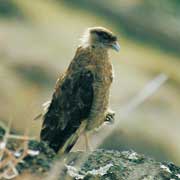
The native birds, the frigate bird featured on many of the island's petroglyphs has been driven away, and the sooty terns "Manutara", which one nested on Motu Nui, are greatly reduced in numbers. The brown hawks "Manu Toketoke", small gray finches "Manu Puhi", pikebirds "Kena" and tinamous "Vivi" have all been introduced from the continent in recent years.
In Rapa Nui there are 167 species of fish that have been identified, 28% of them are endemic to island. This make Rapa Nui a interesting place for ecological and scientists visit.
Marine fowl are of cultural interest and are represented in archeological objects. Fauna in Rapa Nui was important not only as a food product, also as a source of raw materials and religious inspiration. Birds, fish and reptiles are represent in rock art, caves, myths and legends.

» Munga Vai a Heva, face on the stone, Poike.

» Orongo.
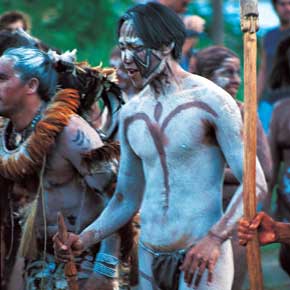
» Body painting.

» Craftsman.
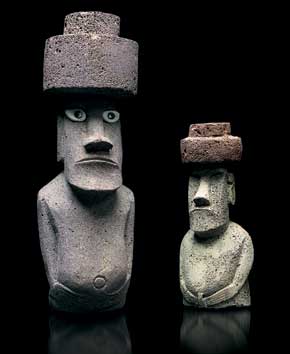
» Crafts restored by MAPSE.

» Tipanie flower.
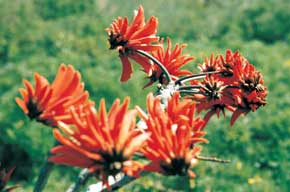
» Rural flower.

» Duck of long flight.

» Credits: Diving centers ORCA.
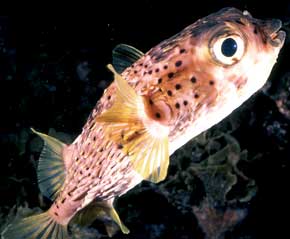
» Credits: Diving centers ORCA.